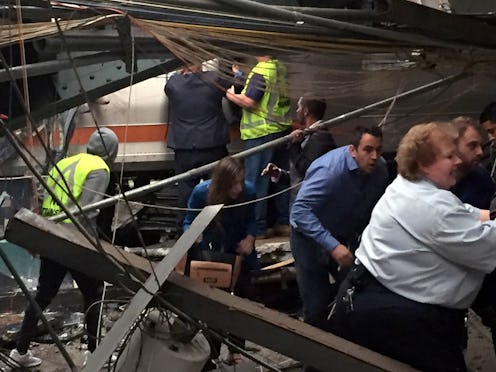News
How Common Are Train Crashes?
This morning, a train crashed in Hoboken, New Jersey, with more than 100 people reportedly injured. While information about the crash is coming in, it has a lot of people wondering: How common are train crashes? Are they something you need to be worried about?
The answer, probably, is "no." This isn't to say train crashes don't happen; they obviously do. But they are a pretty rare event relative to the amount of train traffic we have in the United States. In fact, studies strongly suggest that traveling by train is statistically safer than traveling by car.
Last year, for instance, Amtrak trains, which account for most passenger rail travel in this country, traveled around 19 million miles in total, but had only 969 train accidents and incidents, which in turn resulted in only 67 fatalities. Which makes Amtrak, statistically, a very safe mode of travel.
Of course, that doesn't mean trains aren't prone to incidents. Overall, train derailments themselves are fairly common, but most don't result in death or even injury. This makes sense when you think about it — most trains in America are not passenger trains, but cargo trains. And most train tracks pass through rural areas, without many bystanders around to be hurt if a train goes off the track. So the most common result of a train derailment is usually damage to the train and its cargo, not to humans.
Of train incidents that do result in injury and fatalities, the most common cause are highway-rail incidents, where trains collide with cars at track crossings. In 2015, for instance, this type of incident accounted for around a third of all fatalities, probably because of the high chance that the person or people in the car die.
Derailments, on the other hand, are most commonly caused by problems with the track. Many freight companies have therefore made significant investments in recent years into improving and upgrading track. Amtrak, on the other hand, has not been able to do so, largely because the service is chronically underfunded. In most of the country, the company uses rails owned by freight companies, but they have their own tracks in the busy Northeast; however, federal law requires Amtrak to use their Northeast revenue to subsidize travel costs throughout the rest of the country, meaning they don't have enough left over to keep up with rail improvements.
Still, overall, train travel remains very safe. So although there are definitely ways to make it safer, and although tragedies do still happen, if you're a regular rail rider, you don't have to worry about dying on your commute.
